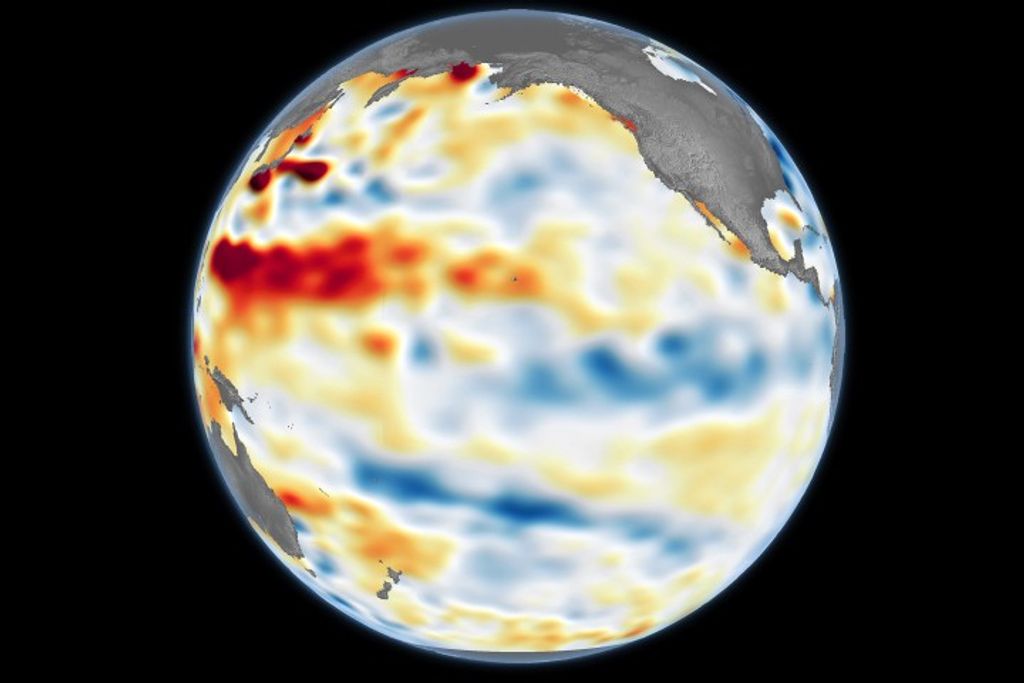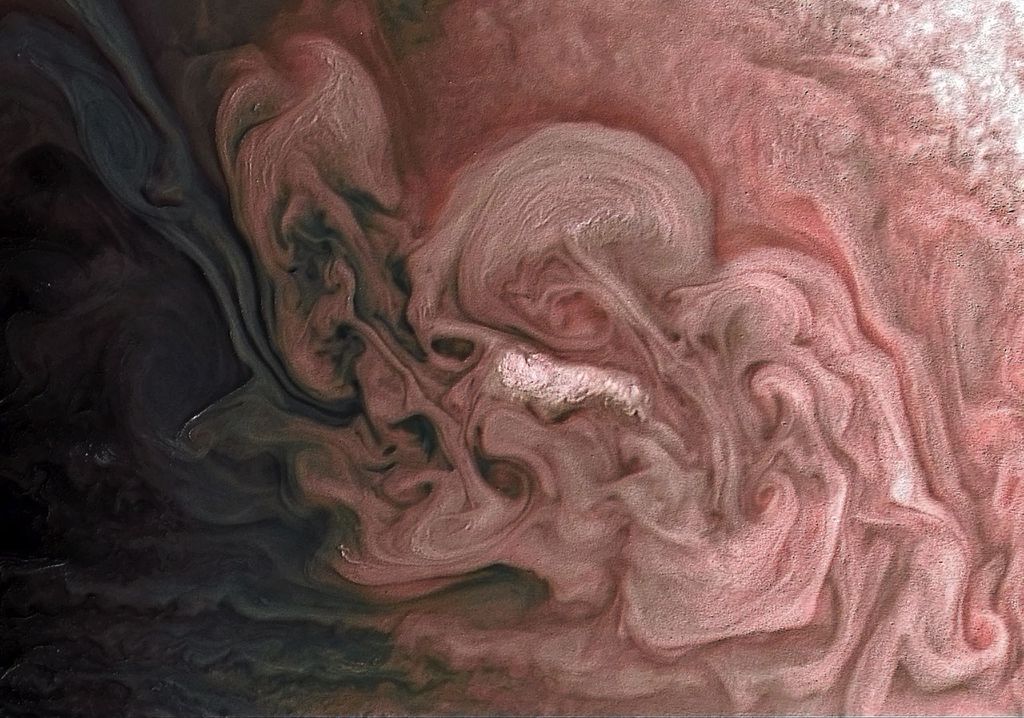Sarah Ruiz
Contents
Personal Essay
Unlike a lot of my friends and coworkers, I wasn’t space-crazy as a child. Despite having an astronomy buff and engineer father, I wanted to be a teacher, or an architect, or a Disney animator, or a musician…until 9th grade. That year, my physics teacher offered extra credit to any student who wrote a paper for a contest sponsored by NASA and the National Science Teachers Association; the prompt was to design and propose an experiment that could be done on Mars. The mere mention of “extra credit” was all it took for a geeky student like me. I wrote the paper, and won a trip to KSC to present it to real NASA engineers. It was 1993, and I got an up-close view of NASA for the first time. We saw Endeavour on the launch pad, getting ready for the flight that would repair the Hubble Space Telescope. I was hooked.
I entered that contest three more times, even without the lure of extra credit. I won another trip to KSC and then a trip to Johnson Space Center (JSC) in Houston, where I saw Mission Control for the first time with only the faintest idea that I might be sitting at one of those consoles years later. When I started to think about graduating high school and going to college, I slowly realized that NASA was something people did as a regular job – NASA was something that I could do.
As a high school senior, I sent letters to the JSC Co-op office, and after I arrived at Georgia Tech to study aerospace engineering, I sought out other students involved in the co-op program at JSC. I absorbed any and every bit of advice that I could about how to become a co-op, and sent more letters. At the end of my freshman year, as I was packing up to head home for the summer, I got a phone call from Houston. By the end of the day, I had a co-op job at JSC! I later learned that the only reason I was selected for an interview was that two extra co-op spots opened up, and there was no time to go to any additional colleges for interviews. My resume happened to be sitting on the co-op coordinator’s desk. It pays to be persistent!
Each of my several assignments at NASA has been rewarding in its own way. After graduating from college, I transitioned from co-op to full-time trajectory analyst in JSC’s Mission Operations Directorate. Only 8 months later, the Columbia accident changed the scope of our role overnight as I worked on a team tasked with identifying where debris could most likely be found on the ground. Finding these fragments was critically important to identifying what caused the accident and ensuring that it could not happen again.
In 2006, I was selected as a Rendezvous Officer in Mission Control. I spent many hours on console while the space shuttle orbited overhead, and served as Lead Rendezvous Officer for STS-129 and STS-133. Leading the rendezvous team for those missions and working on real-time mission operations was a truly unique experience, and a career highlight that I will never forget.
When the space shuttle program ended in 2011, I chose to join the Safety & Mission Assurance (S&MA) organization as a safety engineer supporting the International Space Station (ISS). Although I looked forward to the new challenge, I worried that I would miss being in the “hot seat” of the flight control world…but I quickly realized that Safety was a very good fit for my personality. I really enjoy learning new systems and gaining a breadth of experience, cooperating with other organizations, and focusing on the larger integrated picture of a complex system like the ISS – and S&MA has provided many incredible opportunities to do each of those things.
In addition to engineering, I enjoy more creative pursuits. As a child, I animated my own Disney characters on plastic transparencies, edited a section of the campus newspaper in college, worked as a photographer and graphic designer in my 20s and early 30s, and recently taught myself to sew in order to make bags and quilts. I sometimes wonder how I ended up in engineering at all, but the truth is that I love both, and I like finding ways to mix my technical and creative sides. Although its mission is technical, NASA is not just for engineers – we need all types of people with all types of backgrounds!
Having my daughter two years ago impacted me in ways I didn’t expect. I’ve become more focused than ever on identifying my career path and how and where I can best contribute to the Agency—it’simportant for me to set a good example for her of how to work hard but smart, and how to lead a balanced life engaging both sides of her brain.
The space program has been an integral part of my daily life since I arrived at JSC as a wide-eyed 19-year-old coop student. Seventeen years later, I am happier in my career and life than ever before and look forward to more great adventures to come!
Biography

Sarah Ruiz’s interest in NASA began as a high school freshman when she was challenged by her high school physics teacher to enter a contest. She won the regional prize and traveled to KSC to present a Mars experiment design—an experience which exposed her to the variety of amazing things NASA was doing, including preparations for the STS-61 Hubble repair mission. For the first time, she realized that doing “space stuff” was a viable career option. Inspiration led to dedication and now Sarah supports the International Space Station (ISS) program at the Johnson Space Center (JSC) as a safety engineer specializing in operations and visiting vehicles. She recently finished a three-month detail as Acting Deputy Chief, Safety & Mission Assurance (S&MA) Officer for the ISS. Her favorite part of the job is the breadth of topics that S&MA engages in, from providing oversight and guidance to systems under development to assessing the risks of real-time anomalies across the station’s many systems. She is passionate about STEM education and sharing NASA’s mission with the public through mentoring teachers and students via the Reduced Gravity Education Flight Program, and as a NASA Ambassador at several NASA Socials. Sarah was born and raised in Charlotte, NC, and came to JSC as a cooperative education student in 1997. After earning a B.S. in Aerospace Engineering from Georgia Tech and an M.S. in Aeronautics and Astronautics from Stanford, she joined the agency full time in 2002. Prior to her current job, Sarah worked in Mission Control as a space shuttle flight controller, highlighted by her roles as Lead Rendezvous Officer for STS-129 and STS-133. She also supported the Columbia accident investigation and return to flight efforts as a trajectory analyst, and spent time working with the entry, descent and landing team for the Mars Science Laboratory. Outside of work, Sarah has balanced technical work of her day job with more creative pursuits. She recently earned an M.A. in Digital Media, and has worked as a freelance web designer and photographer. She also enjoys quilting, crafting, and spending time with her husband (also a NASA engineer) and their 2-year-old daughter.


























